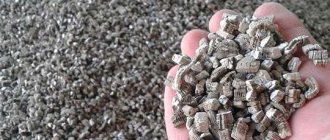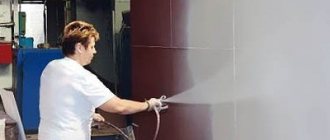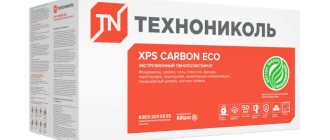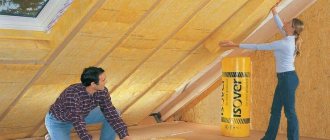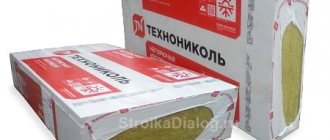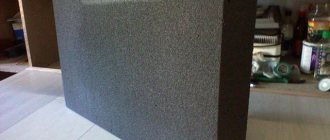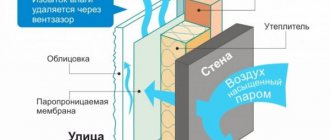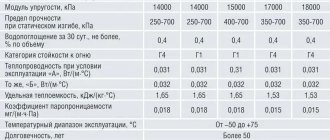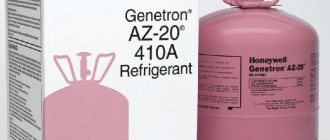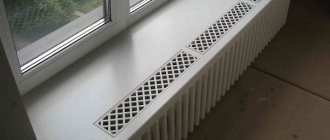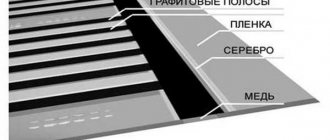Peculiarities
In appearance, expanded perlite resembles sand or fine crushed stone, depending on the degree of grinding. It has a color ranging from snow-white to white with a grayish tint. The production of perlite involves its division into various fractions - from perlite powder measuring less than 0.14 mm to perlite crushed stone - 10-20 mm.
In addition, the material is divided into grades that correspond to the bulk density of expanded perlite:
- M75 - up to 75 kg/m3.
- M100 - up to 100 kg/m3.
- M150 - from 100 to 150 kg/m3.
- M200 - from 150 to 200 kg/m3.
- M250 - from 200 to 250 kg/m3.
- M300 - from 250 to 300 kg/m3.
- M350 - from 300 to 350 kg/m3.
- M400 - from 350 to 400 kg/m3.
- M500 - from 400 to 500 kg/m3.
Different grades of material are used for different needs. The thermal conductivity of expanded perlite also depends on the volumetric weight. It can vary from 0.034 W/Mk. The most common grade of expanded perlite for use is M 75.
Technical characteristics of insulation
For insulation, expanded porous perlite is used, made from rock.
Rock is formed in a lava flow during a volcanic eruption. It is formed as a result of the action of groundwater on volcanic glass. The mineral has a specific structure and easily breaks down into separate round parts - pearls. Another distinctive feature of porous rock is its water content of about 1% of the total volume.
In construction, expanded perlite insulation is used, which has undergone heat treatment in ovens at a temperature of 1100°C. When heated, moisture evaporates, giving the mineral a porous structure and increasing its size several times. The material becomes light and acquires heat-insulating properties. It is manufactured with different fraction sizes from fine sand to crushed stone. The dimensions of construction perlite are 0.16-1.25 mm, agroperlite – 1-5 mm. Perlite sand has a wide variation in density - 40-200 kg/m3.
Specifications:
- thermal conductivity – 0.043-0.052 W/m*K;
- humidity by weight – no more than 2%;
- unevenness of grain sizes – up to 15% by volume of the product;
- moisture absorption – up to 400% of its own weight.
The insulation is chemically neutral and is not affected by alkalis and weak acids. It does not rot under the influence of moisture, microorganisms and rodents do not live in it. The heat insulator is used in a wide temperature range from -200°C to +900°C. The material is environmentally friendly for people and does not contain toxic impurities or heavy metals.
Material advantages
Perlite is often used as insulation, this is due to the fact that it has the following positive characteristics:
- Natural origin. For this reason, the material is environmentally friendly and has no chemical impurities.
- In perlite, the development of various bacteria is impossible, and rodents do not grow in it.
- Perlite does not contain any binders. This means that during operation and storage it does not change its physical properties and does not shrink.
- The material is loose and therefore vapor permeable. This allows excess moisture in the room to evaporate.
- Perlite is not a flammable material, which significantly increases the safety of structures in which it is used as insulation.
Due to these positive properties, expanded perlite is popular in construction.
Where can you use perlite?
Such a good adsorbent as perlite is used to eliminate environmental disasters, and for water purification, and as a filter in food production. But we will dwell in more detail on growing plants.
We have already found out that perlite serves as good drainage for flowers in pots, but this is not its only use. If during the heating period the air in the room is too dry, you can increase the moisture content in it using agroperlite. Large grains are moistened in water and laid out next to the plants. This is better than spraying because the water evaporates gradually and the humidity lasts longer. It will be convenient to pour moistened perlite onto a tray and place pots with plants on it.
Why is perlite needed in agriculture? First of all, gardeners use it to germinate seeds. If you mix seeds with it, they will be better distributed over the soil surface. You can first put them in damp perlite until the sprouts begin to hatch, and then plant them in the soil.
It is agroperlite that helps create green golf courses, football fields and lush city lawns. The grass is sown in a mixture of sand, nitrogumus and perlite (about 20% of the planting mixture). Thanks to this, the largest sports grounds are actively used for up to ten years, and they do not lose their appearance, do not become waterlogged during rains, or turn yellow during drought.
Immediately after sowing, you can cover the soil with a layer of perlite to protect them from direct sunlight and moisture. It is suitable for mulching the soil, but we will talk about this in more detail.
In order for the cuttings to take root, they can also be placed not in water, but in perlite. Then there will be less chance that they will rot from excess water. Agroperlite facilitates the storage and transportation of cuttings.
Have you seen the amazing forests of Norway? Since the seventies, tree seedlings have been rooted only using perlite.
Seedlings can be planted in soil with perlite in early spring; wintering of plants is also allowed. It retains heat and prevents the roots from freezing. It is also a useful fertilizer additive.
How to choose the right garden pruners
The harvested crop is well stored in agroperlite. If you sprinkle vegetables or fruits with perlite, they will not spoil due to dampness. You can additionally treat it with a fungicide, then the products will sit for a long time, they will definitely not be afraid of mold. Also, root and tuber crops will germinate less frequently.
Finally, perlite is an important hydroponic substrate. Let's see how it is used in hydroponics.
Plaster solutions
The density of expanded perlite allows the material to be used for preparing plaster solutions. They are well suited for thermal insulation of houses, since a layer of such plaster with a thickness of only 3 cm replaces brickwork of 1 brick.
The advantage of the mixture is that it can be applied to any surface - from wood to cinder concrete. At the same time, such plaster does not lose its properties. To prepare it, fine perlite powder is used. After complete drying, such plaster can be subjected to any finishing - it is equally good for subsequent painting and for wallpapering.
How to use perlite
Let's look at how to use perlite in specific situations. Regardless of the type of work, remember that fine agroperlite is quite dusty, so first moisten it with a spray bottle. It is advisable to wear a respirator or mask - the smallest dust is very harmful to the lungs. If dust gets into your eyes, be sure to rinse them with water.
For drainage of indoor plants, coarse perlite is used. It is placed at the bottom of the flower pot. The thickness of the layer depends:
- depending on the shape of the pot - in narrow and tall ones, perlite is laid out about a third of the height, in wide and low ones, a small layer of drainage is enough (1/8 of the height);
- on the number and size of the holes in the pot - the more, the lower the height of the drainage layer required;
- depending on the material - pots made of unfired clay are “breathable”, they can also have less drainage;
- from the origin of the plant itself.
Tropical plants are not so afraid of excess moisture. But for desert natives (cacti, succulents), normal drainage is vital.
Soil is poured on top. You can sprinkle the soil with agroperlite and top it as mulch. This will create a favorable microclimate for the plant. Alternatively, you can mix the soil with perlite (no more than 30% of the volume).
As for seedlings, they can be grown in clean perlite, but do not forget to water them with fertilizers. Fertilizers must be complex. Calcium supplements will shift the pH of perlite to the alkaline side. We remember that in itself it is neutral. In such a substrate, seedlings are less likely to be affected by blackleg and other fungi.
Greenhouse frame for polycarbonate: secrets of selection
A mixture of perlite and half-and-half peat soil is also successfully used. This mixture is also suitable for rooting cuttings or germinating seeds.
Mortars
Based on expanded perlite, mortars are often made and used for laying bricks or other materials. Such solutions are light, durable and warm at the same time. When dry, the result is a masonry made of brick, cinder block or foam concrete, which does not have cold bridges. Mortars are also used to seal various cracks, joints and other irregularities.
To prepare a dry mixture, perlite sand is mixed with gypsum or cement. It is necessary to dilute with water immediately before starting work, since such a construction mixture tends to harden quickly.
Insulation technology
After backfilling, the perlite must be compacted.
The high hygroscopicity of the backfill requires the installation of a waterproofing layer. An important condition is to use only dry perlite. The width of the hole into which the mineral is poured depends on the climatic conditions of the region. It is at least 15-20 cm. During the construction process, perlite is poured into the space between the walls gradually, after the construction of 4-5 rows of bricks or concrete blocks. Tamping is done by tapping with a wooden hammer. The flowability of the material in this case is a useful property. It fits tightly, leaving no voids.
When insulating floors, a plasterboard or chipboard flooring is first laid on the base. The thickness of the backfill layer is at least 1 cm. It is covered with kraft paper or cardboard. Cellulose materials do not prevent moisture evaporation. Perlite bitumen slabs are used for pitched roofing.
Thermal insulation of walls
To insulate the walls, perlite sand with a fraction of about 6 mm, previously dust-free, is used. It must be laid between brickwork. The process can be carried out either manually or using a sandblasting machine. When laying, it is necessary to periodically tap the wall in order to compact the swollen perlite. The thickness of the insulating pad is usually about 5-10 cm. This is enough to ensure the safety of heat in the house.
Roof insulation
The use of expanded perlite is not limited to wall insulation, since the roof also requires additional thermal insulation. For these purposes, a fraction of the material is used, similar to that required for wall insulation. To carry out thermal insulation, perlite must be poured between the sheathing and roof sheathing, periodically tapping it to better compact the material.
Often bituminized perlite is used, that is, mixed with bitumen. It has an adhesive and durable structure. The advantage is the fact that laying bituminized perlite does not require heat treatment and hardens on its own. However, for beginners it is more convenient to use ordinary bulk material, since it is more convenient to distribute it without the presence of certain skills.
Floor insulation
Not only private houses, but also dwellings in multi-apartment apartments may require additional insulation. To do this, it is important to free the surface from the previous coating. Also, some communications or a heated floor system are often placed under the screed.
In order to insulate a floor using expanded perlite, you must proceed as follows:
- Completely remove the old floor covering and, if necessary, the concrete layer.
- For insulation, fine perlite is used - up to 6 mm.
- It must be spread in an even layer. Most often it is about 3-5 cm. This is enough to hide uneven floors and provide thermal insulation.
After the perlite is poured out, it needs to be lightly tamped so that it becomes compact. After this, the floor is ready for pouring concrete screed.
Perlite products
Today, a large number of materials are produced, each of which has its own characteristic features:
- Silica-perlite is a material that also contains lime, sand, ash or slag. In this case, the ingredients are mixed and baked in molds in an autoclave.
- Bitumen perlite is a combination of expanded perlite with liquid bitumen. Often used for hydro- and thermal insulation of roofs.
- Carboperlite is a pressed mass of expanded perlite sand and lime, followed by gas treatment. The result is products for pipeline insulation.
- Gypsum perlite is a combination of expanded perlite with gypsum by casting or semi-dry pressing.
- Ceramoperlite is a combination of perlite and clay followed by heat treatment.
In addition, in construction there are also applications for such products as glass perlite, basalt-perlite fibrous material, plastperlite, perlite-containing brick, asbestos-perlite cement, perlite-cement non-combustible slabs.
Perlite
Description
Perlite is a natural material, a rock that is volcanic glass, containing 70-75% SiO2; 12-14% AI 2O3; 3-5% NaO, about the same amount of K2O, up to 1% Fe2O3, CaO, MgO.
A distinctive feature of perlite rock is that it contains from 2 to 5% bound water.
Due to its nature and chemical composition, perlite, like any glass, is inert, chemically and biologically resistant.
Application in construction
Perlite is widely used in the construction industry as a promising, sought-after multi-purpose material.
Mortars and plasters
The use of warm perlite plasters in rural and individual construction is especially promising.
A layer of such plaster 3 cm thick in its thermal insulation properties is equivalent to 15 cm of brickwork.
The plaster is applied to brick, concrete, slag concrete, metal mesh, wood and can be painted or wallpapered without any additional work.
It can be used to insulate both heated and unheated rooms.
Heat and sound insulating plaster solutions based on expanded perlite sand, binder and various additives (mineral, asbestos, cellulose, waste from natural silk and cotton) have become widespread.
To reinforce the perlite solution, cellulose and glass fibers 10 mm long are used in an amount of 5-10% of the mass of the solution.
This is the optimal fiber length at which the samples have the greatest strength. With a longer length, mixing the solution is difficult, its homogeneity is disrupted, which negatively affects the strength properties.
The tensile strength in bending of specimens made of gypsum and cement increases by 1.8–2.3 times with an increase in fiber content to 7–8%.
A further increase in the amount of fiber does not provide an increase in strength, and when adding more than 10% of it, there is even a decrease in strength indicators.
Lightweight mortars based on expanded perlite are widely used in construction.
Mixed dry with gypsum or cement, such compositions are mixed with water directly at the construction site and laid.
They fill cavities in walls, blocks, bricks, and grout seams and cracks.
This composition has the following characteristics: average density - 650 kg/m3; tensile strength - more than 1.7 N/m2; compressive strength - more than 5 N/m2; thermal conductivity - about 0.2 W/(m*K).
This type of mortar is most interesting for construction from lightweight brick or foam concrete, the properties of which are close in their thermal parameters to the characteristics of the mortar.
Masonry with such mortars does not have cold bridges.
Thermal insulation backfills
Perlite sand has found wide application in thermal insulation backfills of walls, floors, and ceilings of buildings.
The use of perlite sand makes it possible to reduce the thickness of the thermal insulation backfill by 2-3 times compared to expanded clay, which is widely used in Russia.
For example, to obtain the required thermal resistance characteristics of walls established by SNiP II-3-79 (1998) “Building Heat Engineering”, buildings require backfilling with a thickness of 500 mm of expanded clay M600 (the most common grade) or only 150 mm of perlite sand M-75.
Compared to other thermal insulation materials, expanded perlite sand does not emit any harmful substances - it is environmentally friendly, non-flammable, does not age, and pests do not live in it.
To insulate the walls of buildings, perlite sand is used, with a bulk bulk mass of 60-100 kg/m3.
The cavity between the load-bearing and facing masonry is filled in layers after laying 3-4 rows of bricks.
To avoid shrinkage during operation, the backfilled layer is compacted by tapping by approximately 10%.
Waterproofing gaskets are placed at working breaks in the insulation. If necessary, the insulating layer can be made of any required thickness.
Possessing high heat-protective properties (0.04-0.05 W/(m*K), expanded perlite does not age and is not destroyed by pests of animal and plant origin.
Backfilling is done both from bags and using special sandblasting machines.
Perlite backfills are used to insulate walls made of wood and frame structures.
Such insulating layers are non-flammable and therefore increase the fire resistance of buildings.
Perlite backfills are widely used in the construction of warm sloping roofs.
First, diffusion-permeable bottom covering boards (such as plasterboard) are laid on the rafters.
Perlite is poured into the cavity between the sheathing and sheathing and compacted by 10%.
When making the bottom covering layer from clapboard, a waterproof layer of glassine or film is laid over it.
The connection points to the gutter, as well as the passage through the roof, are hermetically sealed with sealing and adhesive tape.
A very interesting material used to insulate sloping roofs is bituminized perlite.
Perlite particles, pre-treated with bitumen in the factory, become sticky when a solvent is added to it.
This allows you to create extremely durable insulating layers of any shape directly during work.
This insulation combines well with bituminous cover layers and insulation boards and does not require heating before installation.
Using expanded perlite, heat and sound insulation of floors is performed.
To install insulated monolithic floors with asphalt or other hard coating, hydrophobized expanded perlite sand with a particle size of up to 6 mm and a bulk density of up to 95 kg/m3 is used.
Expanded perlite sand from bags is poured onto the base and distributed by leveling slats so that the thickness of the sand layer exceeds the desired thickness by 20%.
The minimum laying thickness is 1 cm. Pipelines and other irregularities are simply buried in a layer of this free-flowing material.
The entire surface is covered with slabs, on top of which a monolithic coating is made.
If such layers are not installed on the basement floor, then, first of all, drainage pipes are laid to accumulate and remove moisture.
An absorbent protective pad, such as kraft paper (but never film), is placed under the layer.
When installing floors with wooden coverings, expanded perlite is laid without compaction.
Any cavities between beams and lumber, without loss of insulation to various cuttings, are filled without difficulty.
The non-combustibility of the material increases the fire resistance of the floor structure.
If it is necessary to prevent dust and strengthen the upper perlite layer, sprinkle the layer with cement, followed by light wetting.
Another way to strengthen the insulation layer is to cover perlite with diffusion-open materials, such as fiberglass, corrugated cardboard, kraft paper, and fiberboard.
To increase the load-bearing capacity of the bulk thermal insulation layer, especially when laying monolithic floors, particles of expanded perlite are treated with wax.
Despite its insignificant dead weight, such perlite, compacted under load, forms a stable, fairly strong insulating layer for dry screed floors.
Pelitocement slabs
They belong to the group of non-combustible materials and can be used: for fire protection of steel, reinforced concrete and wooden building structures; for thermal insulation of building structures of residential, public and industrial buildings and structures; for thermal insulation of industrial equipment at temperatures of the insulated surface up to 600 °C, including DKRV and DE boilers.
Asbestos-perlite cement
To insulate power equipment with surface temperatures up to 600 °C, perlite cement compositions with fluffed asbestos are used.
Asbestos-perlite-cement products are characterized by the following properties: density 200 - 400 kg/m3; thermal conductivity (at 25 and 325 °C) 0.075 - 0.092 and 0.118 - 0.145 W/m.K, respectively; ultimate bending strength – 0.20 – 0.36 MPa.
Silica-perlite
To produce silicate perlite, expanded perlite sand is used. The binder can be lime-sand, lime-slag or lime-ash.
Silica-perlite can be produced by pressing using small fractions of perlite sand (up to 1 mm) and slaked lime, followed by steaming in an autoclave and molding in metal molds with vibration.
The thermal conductivity of silicate-perlite, depending on density (100-340 kg/m3) is 0.105 -0.239 W/m.K.
It is most advisable to use silicate-perlite products for thermal insulation of the surfaces of industrial equipment and pipelines at temperatures up to 900 °C.
Bitumen perlite
It is a heat, steam and waterproofing material obtained by mixing expanded perlite sand and bitumen.
Bitumen perlite is used for insulation and waterproofing of combined roofs, industrial refrigerators and other technological equipment operating at temperatures of –50…+150 °C.
Modified bitumen perlite (for example, phenol-formaldehyde resin LBS-3) becomes more heat-resistant (180 - 190 °C) and can be used for insulating heating networks.
Material density 300 - 450 kg/m3, thermal conductivity 0.08 - 0.11 W/mK, bending strength 0.15 - 0.20 MPa, humidity no more than 2.5%, daily water absorption 5%.
Carboperlite
It is obtained by semi-dry pressing of a mass consisting of expanded perlite and lime (ratio 1:8.5 - 1:10) followed by treatment of the mixture with gases containing CO2.
Carboperlite products have a density of 200 - 350 kg/m3; thermal conductivity (at 25 and 700 °C) 0.065 - 0.905 and 0.137 - 0.162 W/m.k, respectively; bending strength – 0.15 - 0.30 MPa; compressive strength 0.3 - 0.8 MPa.
Carbolite-perlite products can be used for thermal insulation of the surfaces of energy, technological equipment and pipelines with an insulated surface temperature of up to 650 °C.
Gypsum perlite
Gypsum perlite thermal insulation products are made on the basis of building gypsum and expanded perlite with a density of 80 - 150 kg/m3 using casting, vibration and semi-dry pressing methods.
With a gypsum: perlite ratio of 1:7...8, thermal insulation products with a density of 300 - 400 kg/m3 and a compressive strength of 0.15 - 0.5 MPa can be obtained.
Gypsum perlite products are recommended for thermal insulation of surfaces of energy and technological equipment, gas and steam pipelines at temperatures not exceeding 600 oC.
Ceramoperlite
The composition of the mass for the manufacture of ceramic perlite includes 50 - 60% expanded perlite sand and 40 - 50% ground clay with a particle size of less than 0.25 mm.
Crimperlite products are subjected to heat treatment at temperatures of 300 - 9500 oC.
Physical and technical indicators: density 250 - 400 kg/m3, compressive strength 0.4 - 1.2 MPa, linear temperature shrinkage at 8750 oC no more than 2%, humidity - 1.2%, thermal conductivity at 200 oC - 0.075 - 0.104 W/mk.
Glass perlite
To obtain glass perlite, expanded perlite sand with a density of 80 - 150 kg/m3 and liquid glass with a density of 1250 - 1350 kg/m3 are used with a component ratio, %, 50...70 : 30...50; heat treatment of the mixture is carried out at a temperature of 300 - 400 oC.
Physical and technical indicators: density 180 - 300 kg/m3, compressive strength 0.3 - 1.2 MPa, bending strength 0.2 - 0.7 MPa, thermal conductivity at 200 oC - 0.064...0.09 W/mk , maximum application temperature – 600...700 oC.
Basalt-perlite fibrous material
The new thermal insulation and structural material is based on expanded perlite sand, basalt fiber and a binder (Portland cement or bentonite).
The composition of the thermal insulation material includes the following components, %: expanded perlite 24 - 70, basalt fiber 74 - 20, bentonite clay 9.0 - 2.0.
Material density 150 - 300 kg/m3, tensile strength 0.2 - 0.5 MPa, thermal conductivity 0.038 - 0.041 W/μ.
The composition of the structural thermal insulation material includes the following components, %: expanded perlite 25 - 35, basalt fiber 25 - 30, Portland cement 35 - 50.
Material density 590 - 1100 kg/m3, bending strength 0.4 - 11.0 MPa, thermal conductivity 0.096 - 0.11 W/μ.
Expanded perlite, introduced into the composition of these composite materials, dramatically increases their durability, as it binds clinker hydration products, which cause corrosion of basalt fiber.
Plastperlite
It is obtained on the basis of urea-formaldehyde and coumaron resins, which impart strength, sufficient water resistance and low water absorption.
Plastic perlite thermal insulation boards have the following physical and mechanical properties: density 250 - 280 kg/m3, compressive strength 0.6 - 0.8 MPa, daily water absorption 3.3 - 3.5%, thermal conductivity 0.065 - 0.07 W/mk.
Perlite brick
It is used for construction and industrial thermal insulation with a maximum application temperature of 900 oC.
The density of such bricks is 400 - 600 kg/m3 with a thermal conductivity of 0.105 - 0.176 W/mk.
Standard
GOST 12865-67
Product characteristics
By type of surface to be protected
Concrete / Reinforced concrete / Foam concrete, Wood, Stone / Brick, Glass / Ceramics, Plastic / Plexiglas, Ferrous metals, Plaster / Drywall, Non-ferrous metals, Primed metal, Cable / Wire, Slate
By area of application
Semi-finished materials, Chemical industry, Buildings and structures / Construction industry
By special properties
Thermal insulation coating, For external use, Fire retardant materials, For internal use, Frost-resistant materials
By resistance to impact
Moisture resistance, Mold and mildew protection, Anti-noise / Sound insulation, Radiation resistance, UV resistance, Heat resistance, Chemical resistance, Weather resistance, Fire resistance, Resistance to corrosive gases and vapors, Oil resistance
According to fire retardant properties
Fire protection of concrete, Fire protection of wood, Fire protection of air ducts, Fire protection of cables, Fire protection of metal, Fire protection of plastic
By material type
Other
Buy Perlite
